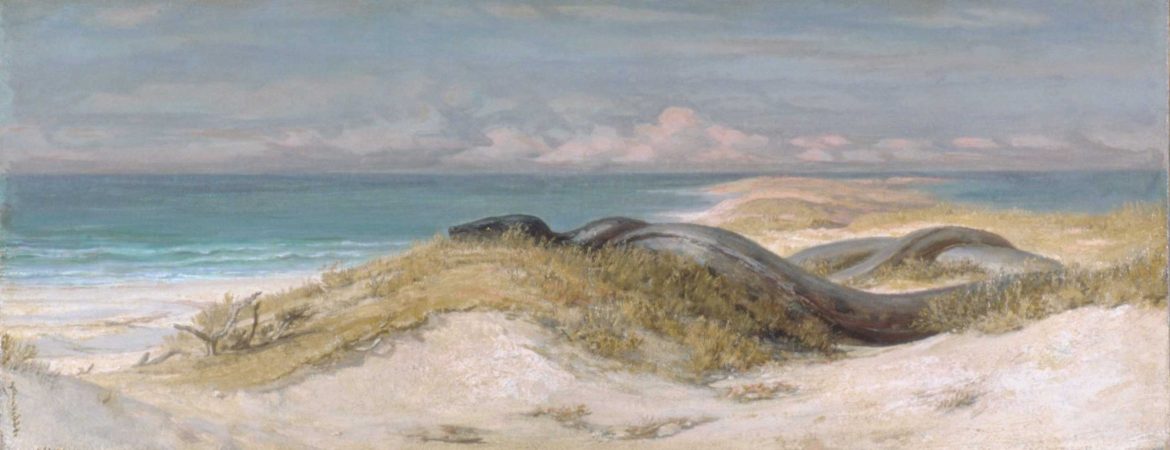
They say the sea has the hottest blood of all.” D.H. Lawrence
Created by a glacier about 18,000 years ago, Long Island Sound was carved from the earth by the tremendous force of ice. The result is a 110-mile-long marine sound filled by fresh waters from river tributaries and salt water from the Atlantic Ocean. At 300 feet deep in places, it may make one wonder…what lurks below?
Tales of sea serpents have been documented for thousands of years across the globe, these storied creatures becoming part of cultures in Norway, ancient Rome, the Far East, Africa, and here on the shoreline of Connecticut. Sea monsters were well known to the Algonquin natives in the area. There are tales of encounters with a ferocious beast named (ital)Mishipeshu that reigned the waters here. Although they advised the seafaring settlers of this peril, the newcomers dismissed the monster as a mere fable.
As settlements took hold, ports were built to expand opportunities for trade routes. Vessels navigated the Sound, carrying goods and people to and fro. Fishing the bountiful waters became an essential enterprise. Ships sailed the waters, and mariners spent days, weeks, and often months aboard traversing up and down the Sound.
In August of 1817, residents and seafarers reported encounters with something otherworldly off the coast of Gloucester, Massachusetts. The Linnean Society of Massachusetts (a natural history society) issued an astonishing report after interviewing sailors and those on shore who purported to see a dark, sinuous animal that moved vertically up and down in the water like a caterpillar. Sailors described a giant snake-like creature with the head resembling the shape a horse, moving high above the surface as its long body moved across the water. The Linnean Society believed it to be an as yet undiscovered species they named Scoliophis Atlanticus.
More sightings were documented after the scientific report was published. All along the Eastern seaboard dozens of ships gave testimony of these creatures, as well as witnesses along the shores. In 1818, Captain Joseph Woodward and the sailors aboard the schooner Adamant were shaken by an encounter. Captain Woodward testified they shot a cannon at the monster. “The serpent shook its head and its tail in an extraordinary manner and advanced toward the ship with open jaws. The crew were seized with terror. He almost touched the vessel, and if I had not tacked as I did, he would have certainly come on board. He remained five hours near us, only going backward and forward.” Woodward’s report was published in the British Literary Gazette in 1818.
The crew of the HMS Daedalus encountered an animal in 1848. A drawing of the incident in The Illustrated London News sent shockwaves throughout Europe and the Americas. The portrait of the enormous menacing beast distressed the public.
Sightings have been reported all along the Connecticut coast, with citizens of sound minds and reputations sharing their encounters of these foreboding creatures. In town after town, sightings were imparted to local newspapers, and citizens grew fearful that such goliaths lurked offshore.
Long Island Sound is a haven for an incredible diversity of sea life. The Race, where the currents are fierce as the Atlantic Ocean, literally races into the Sound, creating a migratory passage through our waters. The idyllic conditions offer sustenance and habitats that make the Sound an appealing place to be for species known, and those yet to be discovered. Watch the waters with unclouded vision, and an open mind. Perhaps you may see something incredible, something that does exist in the depths.
—Susan Carroll Dwyer





